The application of virtual Reality technology in rehabilitation robot - Dr. Pan Jianfei
2020-12-21
One, background introduction
In recent years, the proportion of aging population and frequent natural disasters in China have led to an increasing number of patients with physical dysfunction. According to epidemiological statistics, the incidence of stroke, brain injury and spinal cord injury in China is as high as 1.2 per 100,000, 783.3 per 100,000 and 20/1 million respectively, among which about 80% of the survivors have residual limb motor dysfunction. Motor dysfunction has a serious impact on the quality of life and work of patients and their families, and at the same time has a great economic pressure on the whole family of patients. Therefore, the patient should be timely and effective rehabilitation treatment, as soon as possible to restore its motor function, reduce the impact of the disease. As the main treatment for lower limb motor dysfunction, motor function therapy can prevent and cure muscle atrophy, increase range of motion, enhance muscle strength and promote lower limb function recovery through repeated exercise training of the affected limb. Limb function recovery is still the primary task of rehabilitation treatment, and also an important content of medical rehabilitation research.
Clinically, most rehabilitation doctors carry out continuous passive training for patients with bare hands or simple auxiliary training, repeatedly guide patients' lower limb movement and stimulate the recovery of cerebral cortices related lower limb motor function areas until patients can independently complete normal or tend to normal movements. This traditional one to one exercise rehabilitation therapy has many shortcomings and limitations :(1) physicians' heavy labor intensity leads to the reduction of rehabilitation efficiency; (2) The single repeated training method causes the patients to have negative emotions, and the patients' negative treatment emotions are not conducive to the further development of the training. (3) Rehabilitation doctors cannot directly obtain objective training effects, and subjective evaluation cannot reflect the training situation of patients in all aspects. In view of the above situation, the training system combining lower limb rehabilitation robot with virtual reality technology can not only reduce the labor intensity of rehabilitation doctors, but also enhance the interest of patients in the training process. It is a bold attempt of rehabilitation medicine to introduce virtual reality technology into rehabilitation therapy. According to the training needs of patients, developers can develop various virtual scenes through computer technology, sensor technology and other means to cooperate with patients for training.
Virtual scenes have the following characteristics: highly realistic scenes and feedback of visual, auditory, tactile and other information make it easy for patients to be immersed in the designed scene for training. In addition to its high immersion, the virtual scene can also conduct human-computer interaction with patients. Patients can integrate their subjective will into the virtual scene, which greatly enhances patients' confidence in actively participating in the training. To sum up, the application of virtual reality technology to lower limb rehabilitation robot can solve many shortcomings of traditional exercise therapy, providing a novel and effective training method for rehabilitation training.
The rapid development of computer technology promotes the birth of many new technologies, virtual reality technology is one of them. Repetitive training is the most basic and effective training method in rehabilitation training. It is an important condition for patients to regain their athletic ability. However, simple repetitive training will make patients produce negative emotions, which is not conducive to further training. Relevant studies have found that stimulating the neuromotor cortex can restore the motor function of patients. Based on the above theory, the application of virtual reality technology to rehabilitation training can meet the requirements of repeated training, correct feedback and motivation for training, so that patients can participate in training more easily and joyfully.
The virtual reality technology introduced by rehabilitation robot can solve the deficiency of traditional rehabilitation therapy and improve the rehabilitation effect. The virtual scene established by virtual reality technology has the advantage of friendly interaction. Patients can interact with the system to avoid the occurrence of accidents due to improper operation, excessive motion scale and so on. In addition, relevant parameters such as the movement Angle and speed of the mechanical leg can be set in the virtual scene to fit the rehabilitation psychology of patients and achieve the goal of keeping an optimistic attitude in the training process.
Ii. Combination of virtual reality technology and rehabilitation technology
The following questions should be considered when applying virtual reality technology to lower limb rehabilitation training: What are the advantages of virtual reality technology; What are the basic requirements of sports rehabilitation process; Finally, what are the means of medical rehabilitation for lower limb rehabilitation? By summarizing the above three aspects and combining the existing lower limb rehabilitation means with virtual reality technology, a more reasonable and effective lower limb rehabilitation training means can be proposed.
Current scientific research has concluded that repetitive rehabilitation exercises play a very important role in the exercise of cerebral cortex, but repetitive rehabilitation exercises do not produce motor rehabilitation. Repetitive rehabilitation training must complete a series of specific tasks in order to have a certain effect on sports rehabilitation. The nervous system mainly relies on visual perception or physical perception to receive feedback on training results. In order to get repeated rehabilitation training, patients must be enthusiastic enough to cooperate with the whole rehabilitation process. Therefore, repetition, feedback and enthusiasm are indispensable for successful rehabilitation of patients. The reason why VIRTUAL reality technology can be applied to lower limb rehabilitation training is precisely because the scientific principles involved in virtual reality technology include repetition, feedback, stimulation and other characteristics.
As an auxiliary means, virtual reality technology plays an important role in the treatment of patients with lower limb motor dysfunction. Combined with the technical characteristics of virtual reality and the existing lower limb rehabilitation training methods, this paper expounds the important role of virtual reality technology in the lower limb rehabilitation training process.
(1) Exercise learning therapy. The passive training of lower limb rehabilitation robot can realize the following actions: passive training of single joint of hip, knee and ankle, passive training of linear track of the end of the foot, and passive training of circular track of the end of the foot. Among these movements, rehabilitation therapist according to patients with lower limb movement difficulty to choose the appropriate scene, difficulty and selected in the scene the corresponding training, such, can at the same time of rehabilitation therapy in patients with immersed in rehabilitation doctor selected virtual scene, reaches the rehabilitation therapy to keep happy mood. Virtual reality-based exercise learning therapy can improve patients' subjective initiative in participating in treatment.
(2) Bioinformatics feedback therapy. The sensor system in the lower limb rehabilitation robot can the trajectories of the patients with lower limb and joint torque data real-time feedback to the robot control system, control system the information transfer to the recovery system of virtual scene, virtual scene system will use this information to control the role of virtual scene joint Angle or position of a spacecraft. In this way, the data of patients' rehabilitation training can be transmitted to patients through images or sounds of the virtual scene, and patients can directly learn about their training and rehabilitation status from the information of the virtual scene.
(3) Promoting neurodevelopmental therapy. During the training, the therapist can select the corresponding virtual scene to conduct rehabilitation training for the patients through the active training program. In such a virtual scene, the treated patient can interact in real time with his or her role in the scene (virtual person or ship) and other elements of the scene. Through visual or auditory feedback, patients can understand real-time movement information, stimulate the sensitivity of patients to sensory signals, and strengthen patients' ability to coordinate and control lower limb movements.
3. Research status of virtual reality technology at home and abroad
The Haptic Walker robotic system (shown in Figure 1), developed by the Francahofer Institute in Berlin, Germany, incorporates virtual reality technology, which combines walking rehabilitation training with real-world scenarios to increase the patient's interest and motivation in training. The patient stands on the mobile pedal of the robot, and simulates various training scenarios such as flat bottom and going up and down a building. The weight loss stent is used to reduce the weight of the patient.
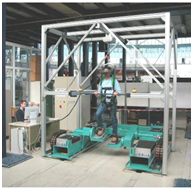
Picture 1 The Haptic Walker walking rehabilitation training robot
A walking rehabilitation training robot called LOKOMAT has been developed at the Federal Polytechnic University in Zurich, Switzerland (see Figure 2). The LOKOMAT rehabilitation system integrates virtual reality technology into the system, providing patients with visual feedback that helps motivate them to train. The LOKOMAT consists of four parts: a weight reduction mechanism, an exoskeleton robot, an electric running platform and a control system. LOKOMAT has sensors that measure joint angles, motor output torques and man-machine interactions.
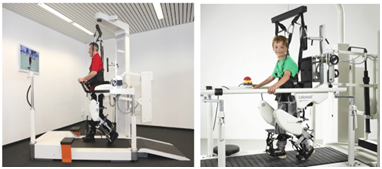
Figure 2 LOKOMAT rehabilitation robot system
The University of Tokyo developed four results: A system similar to CAVE (see Figure 3), in which images were taken with three cameras and projected onto three screens; HMD (Head Mounted Displays) was used to roam in the building group. Three sensors were Mounted on the Head for measuring degrees of freedom, and two sensors were Mounted on the foot pedal for measuring forward and backward movement and left-right turn. (3) Anthropometric and model ground follow-up. The virtual human body displayed in the computer can move along with the real human body after obtaining the human body posture through the sensor on the human body; Flight simulator. A person sits on a six-degree-of-freedom vibrating seat, which simulates the real cockpit through seat vibration, and in-flight scene changes are displayed on a large rear-projection screen, which surrounds the simulator.
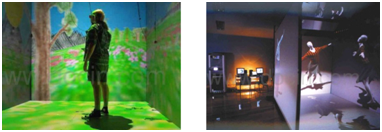
Figure 3 Automatic cave-type virtual Environment (CAVE)
TechViz, a French company, has designed and developed a complete virtual visual operating application platform, through which collaborative design and development of products can be achieved. The TechViz platform is a revolutionary development in the field of manufacturing product development, creating a new space between traditional design development and final assembly. Figure 4 shows car designers using the TechViz platform to design cars.
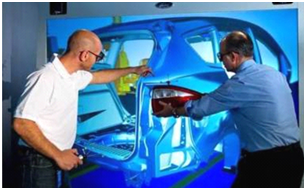
Figure 4. Virtual workshop model
Although the research of virtual reality technology started relatively late in China, it has made great progress in recent years. The state has listed virtual reality technology as a key research project, and some key colleges and universities in China have also actively engaged in the research in this field.
A virtual scene was designed by Hebei University of Technology to assist patients with ankle joint rehabilitation training with an ankle rehabilitation robot (as shown in Figure 5). According to different degrees of rehabilitation, combined with active rehabilitation strategy, the designer developed two virtual scenes of the game, including the scene of airplane flight and the scene of racing car driving. In the process of rehabilitation training, the patient controls the flight path of the plane and the driving route of the car in the virtual scene through the movement of the ankle joint.
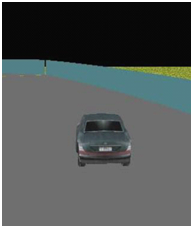
Figure 5. Car virtual scene
Iv. Future Development Direction
From the research achievements of virtual reality at home and abroad, we can see that the essence of virtual reality technology is to construct an anthropomorphic interactive "world" in which participants can move and explore the object elements in the world in real time.
Immersion is the highest ideal goal pursued by virtual reality technology, but also the most difficult to achieve. The research of VIRTUAL reality technology follows the principle of "high efficiency and low cost". The future development trend of virtual reality technology is divided into two aspects. The first is moving towards desktop virtual reality. Such as now more popular business introduction, company training and 3D game scene production. With the rapid development of the Internet, the desktop virtual reality technology based on the Internet will also be realized. The second aspect is the move towards high-performance immersive virtual reality. It is mainly used for the simulation of aerospace vehicle, aviation environment simulation and military soldier simulation training with high requirements of science and technology and precision. Because of some special requirements, highly immersive virtual scenes are needed for experimental simulation.
